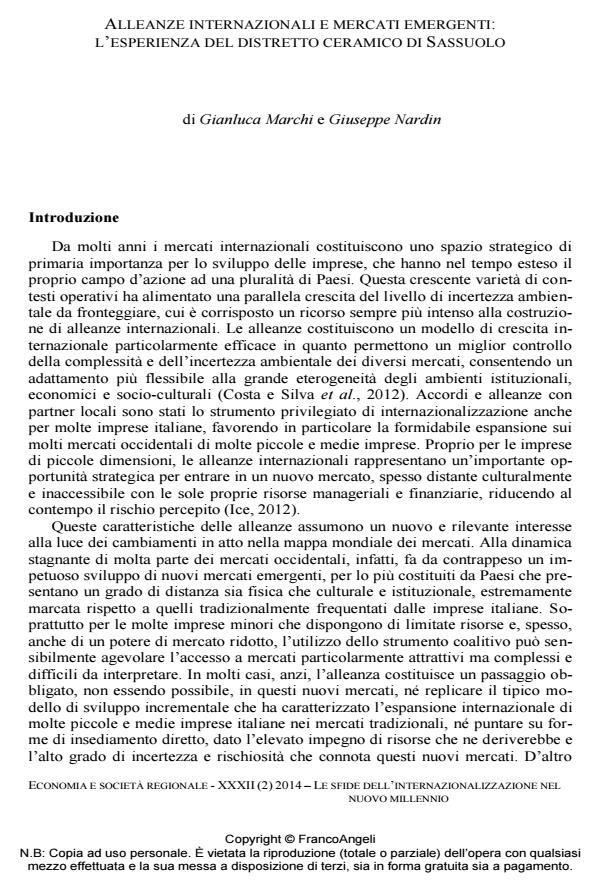Alleanze internazionali e mercati emergenti: l’esperienza del distretto ceramico di Sassuolo
Titolo Rivista ECONOMIA E SOCIETÀ REGIONALE
Autori/Curatori Gianluca Marchi, Giuseppe Nardin
Anno di pubblicazione 2014 Fascicolo 2014/2
Lingua Italiano Numero pagine 11 P. 44-54 Dimensione file 225 KB
DOI 10.3280/ES2014-002004
Il DOI è il codice a barre della proprietà intellettuale: per saperne di più
clicca qui
Qui sotto puoi vedere in anteprima la prima pagina di questo articolo.
Se questo articolo ti interessa, lo puoi acquistare (e scaricare in formato pdf) seguendo le facili indicazioni per acquistare il download credit. Acquista Download Credits per scaricare questo Articolo in formato PDF

FrancoAngeli è membro della Publishers International Linking Association, Inc (PILA)associazione indipendente e non profit per facilitare (attraverso i servizi tecnologici implementati da CrossRef.org) l’accesso degli studiosi ai contenuti digitali nelle pubblicazioni professionali e scientifiche
Gianluca Marchi, Giuseppe Nardin, Alleanze internazionali e mercati emergenti: l’esperienza del distretto ceramico di Sassuolo in "ECONOMIA E SOCIETÀ REGIONALE " 2/2014, pp 44-54, DOI: 10.3280/ES2014-002004